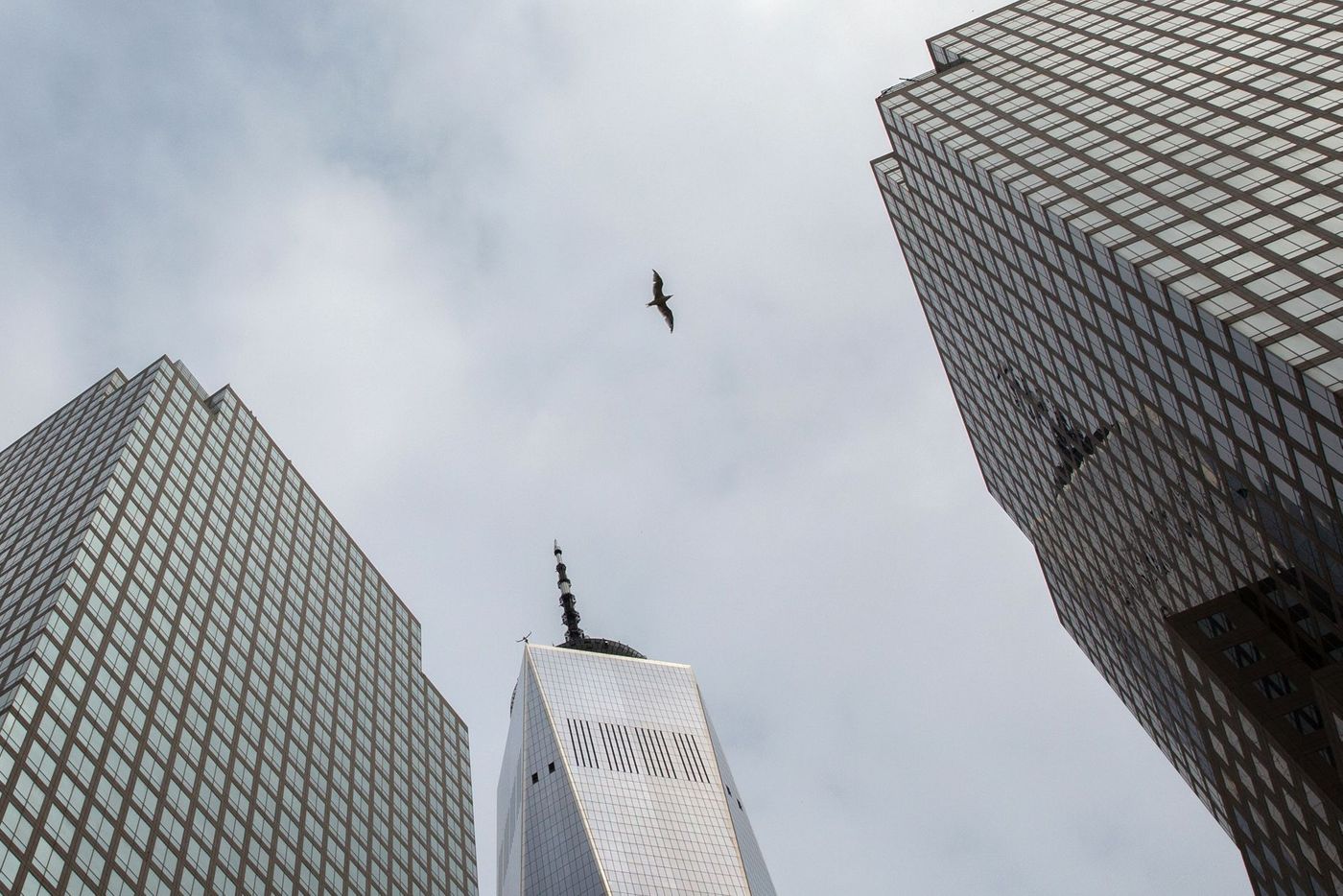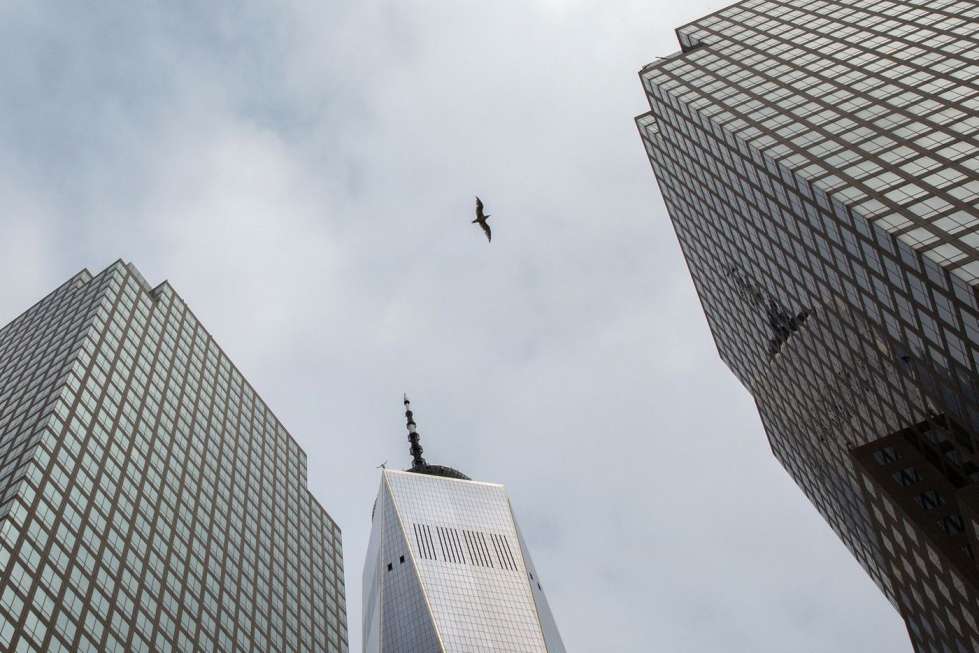Samantha Maldonado, THE CITY

This article was originally published
by THE CITY

Rita McMahon sees carnage falling from the sky.
Each year, about 1,000 birds injured by hitting buildings are brought to the Wild Bird Fund, the Manhattan-based rehabilitation center she directs. Many arrive with double concussions from first smacking into windows and facades then tumbling to the pavement.
Some additionally get hypothermia from the shock of the cold ground. Lots suffer from internal injuries. Most are quite young.
Of all the window-strike birds McMahon’s organization treats, only about a third live.
“It’s the lucky birds that are found, put in someone’s pocket or a paper bag and brought to us. Those are the lucky few,” McMahon said. “They’ve been flying through here for eons, and we in the last 200 years made quite the obstacle course for them. It’s a gauntlet they have to fly through.”
New York City is now stepping up to prevent such collisions, a top cause of bird deaths in urban areas.
Legislation recently passed by the City Council will force city-owned buildings to turn off the lights at night — saving electricity and eliminating some of the visual pollution that both draws and confuses birds navigating the big city.
Coupled with a law that came into effect in January requiring new buildings to incorporate bird-friendly designs — including simple window decals to warn them away from glass towers — avian advocates hope the Council moves will make a difference in the wake of climate-related threats to our feathered friends.
“This is going to protect a lot of birds that are passing to the city at night,” said Andrew Farnsworth, a senior research associate at the Cornell Lab of Ornithology. He expects to see reductions in bird collisions right away.
Now, advocates are ready to push for more protections in the new year.
Light and Glass Menaces
New York City is located on the Atlantic Flyway, one of the four major migration flight paths in North America and the only one on the East Coast. The New York City Audubon estimates between 90,000 and 230,000 birds die each year after colliding with buildings in the five boroughs.
Artificial lighting contributes to those deaths by luring birds to the city and disorienting those that migrate at night. The amount of light a building emits is a “strong predictor” of how many bird collisions will occur, according to the Audubon’s research. Reducing lights, as the two recently passed bills aim to do, can reduce the number of birds attracted to dangerous urban areas.
One bill requires city-owned buildings to turn off the lights at night and into the wee hours of morning during peak migratory season, between mid-August and mid-November as well as April to the end of May. The measure also applies to buildings the city doesn’t own but is the only tenant.
Starting in 2023 and finishing up by 2030, the city must install occupancy sensors in its properties to make sure lights are only on when people are inside, thanks to the second bill that passed. The Council Finance Division estimated the installations for about 17,000 city-owned properties would cost $3.4 million in total, but could result in smaller electricity bills because of energy saved.
The bills, which will become law as soon as mid-January unless the mayor signs or vetoes them first, mark the latest measures to help save birds in the city. A spokesperson for Mayor Eric Adams did not respond to a request for comment.
Another city law went into effect in January that requires all construction and major alterations to include bird-safe materials and designs on facades below 75 feet so that birds can avoid hitting windows and glass walls.
“When I started at New York City Audubon as an intern in 2013, it was unfathomable to me at the time that we would ever get any legislation passed to address collisions, and now, we’ve addressed both light and glass in fairly significant ways,” said Kaitlyn Parkins, interim director of conservation and science at the New York City Audubon.
‘We Can Save Thousands’
The recent legislation the city passed paves the way for stronger measures that cover more buildings, advocates say.
This year, they’ll be pushing the Council to jumpstart a bill to extend the lights-out policy to some privately owned buildings. That measure stalled in committee this year after groups like the Real Estate Board of New York opposed it, raising security concerns for commercial and residential buildings, among other issues.
At the state level, Sen. Brad Hoylman (D-Manhattan) and Assemblymember Patricia Fahy (D-Albany) on Wednesday introduced legislation that would require outdoor lights to be extinguished or set to shine only downwards between 11 p.m. and sunrise.
In the meantime, advocacy and community groups are working with the private sector to cut down on bird collisions.
Inspired by the 226 dead birds a volunteer collected outside the World Trade Center in September, Manhattan’s Community Board 1 passed a resolution in November to encourage building and property owners to use strategies to mitigate bird collisions.
The resolution also called on the Alliance for Downtown New York to inform building owners about the threats posed to birds and how to counter them.
 Ben Fractenberg/THE CITY
Ben Fractenberg/THE CITYThe board is in the process of connecting the organization “with experts who will help guide us on recommendations for our local property owners,” said Elizabeth Lutz, an Alliance spokesperson. “We’ll share that information with them early in the new year.”
At a national level, The Audubon Society runs a voluntary “Lights Out” initiative that calls for buildings to go dark from midnight to dawn during migration season. While opposing the proposed Council mandate, REBNY said it encourages its members to participate.
Locally, NYC Audubon also works with building owners to improve their facades and turn down lights when the organization observes a pattern of bird collisions near certain properties. Sometimes owners reach out to ask for advice when they notice collisions, too, Parkins said.
The problem of bird collisions offers anyone an opportunity to take easy action to help solve it. The public can submit reports of dead and injured birds to NYC Audubon through its tracker. And tenants can turn lights off during peak migration season, use shades when lights are on and install decals or screens to windows to help prevent bird collisions.
“This is something in our power,” McMahon said. “We can make a difference now in short order if we address these concerns and we can save thousands of lives.”
Timing Is Everything
Saving the beaked is a top priority for longtime bird-watchers and those who took an interest during the pandemic as they sought a refuge in nature — especially as existential threats to birds bear down.
Birds declined by nearly a third nationwide over the past 50 years for a number of reasons, including habitat loss, which is fueled by real estate development and climate change.
“Peak migration dates are getting earlier as temperatures increase across the country,” Farnsworth said.
 Hiram Alejandro Durán/ THE CITY
Hiram Alejandro Durán/ THE CITYThe mismatched timing of migration and possible lack of availability of food — because of a warming planet — has “the potential for population crashes and the system starting to break down,” he added.
Even for those whose only thought of birds is to shoo away pigeons, scientists argue that it’s in the interest of all humans to preserve those populations.
From pollinating plants and dropping seeds into areas ravaged by fires, to eating insects that bring diseases and destroy forests, birds keep the planet healthy and contribute “billions and billions of dollars to agriculture,” said Christine Sheppard, the bird collisions campaign manager at American Bird Conservancy.
“Birds provide services that we cannot replace.”
THE CITY is an independent, nonprofit news outlet dedicated to hard-hitting reporting that serves the people of New York.





